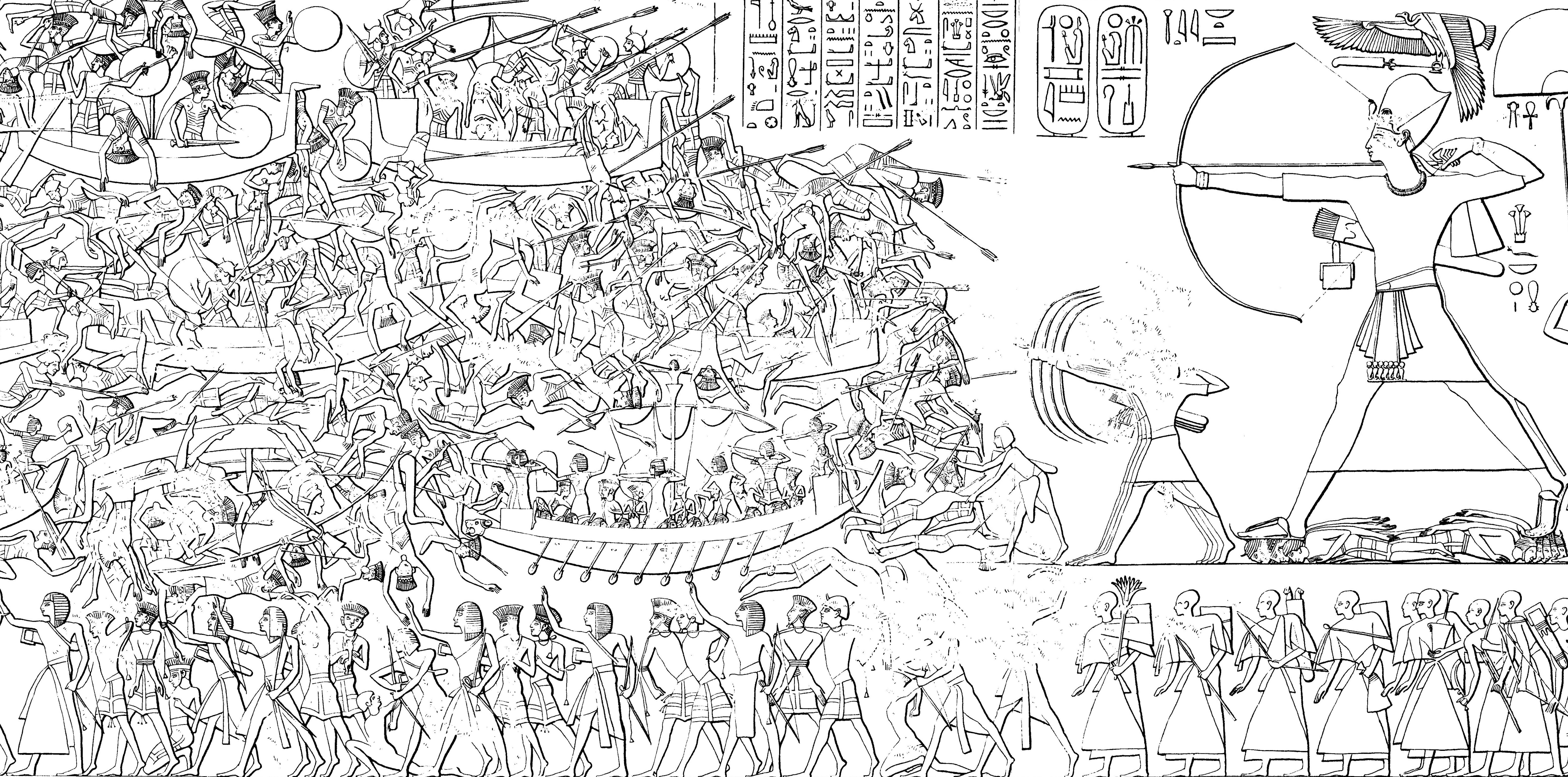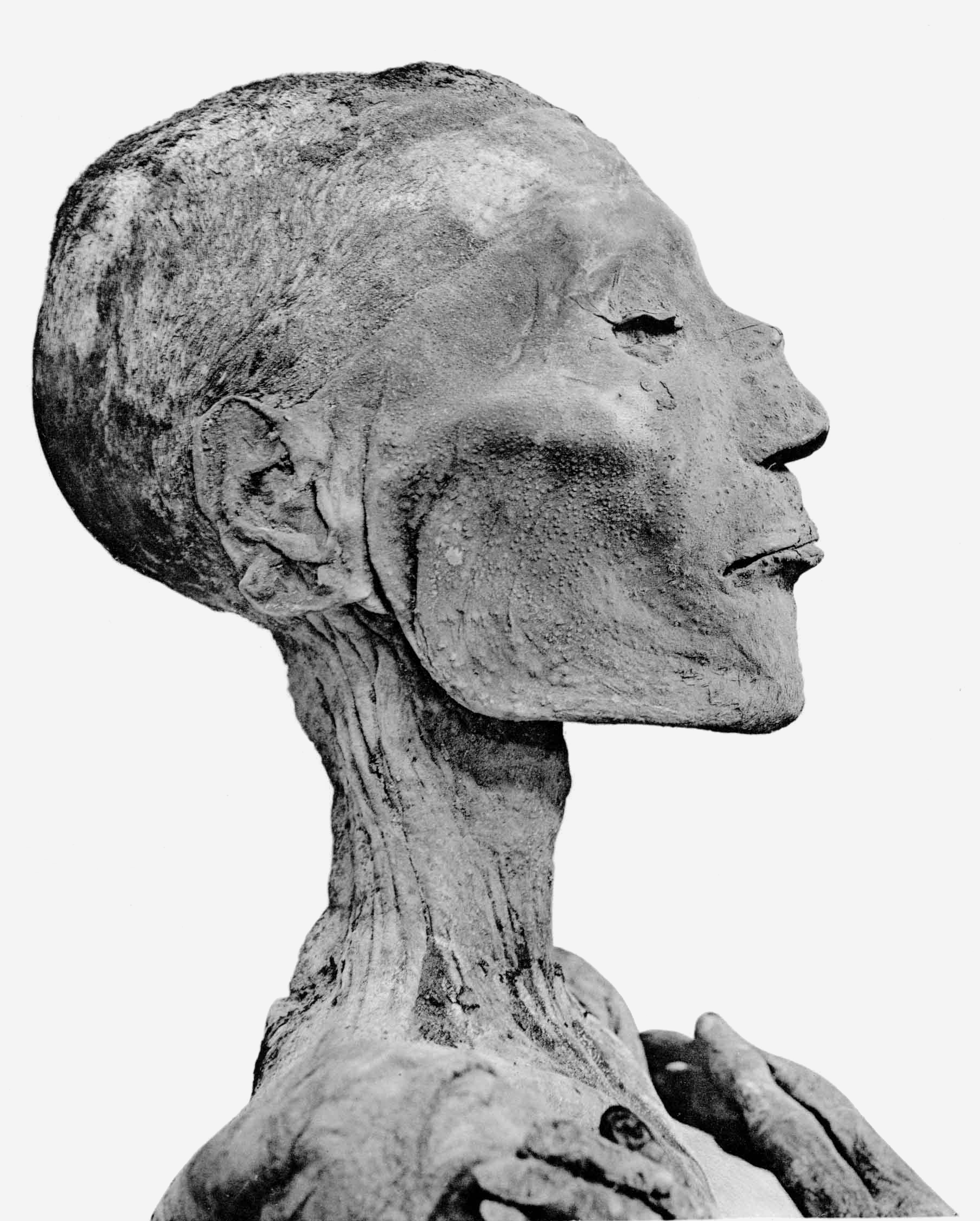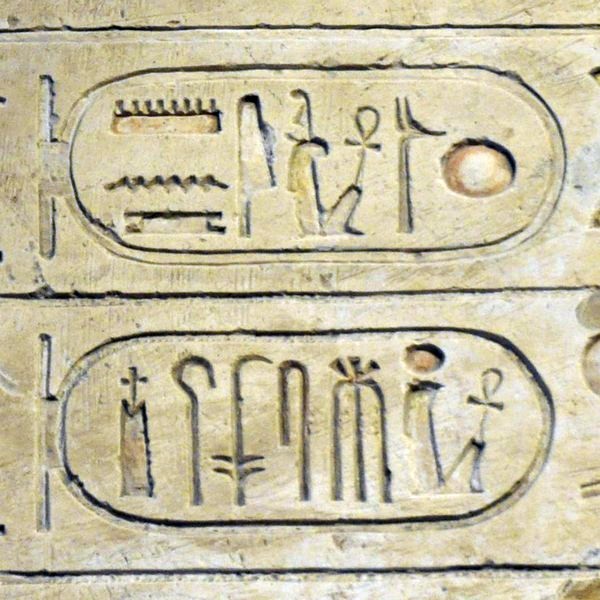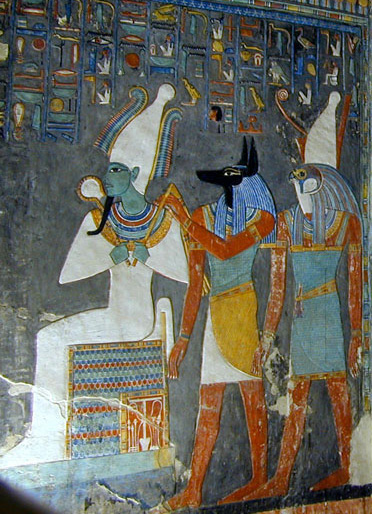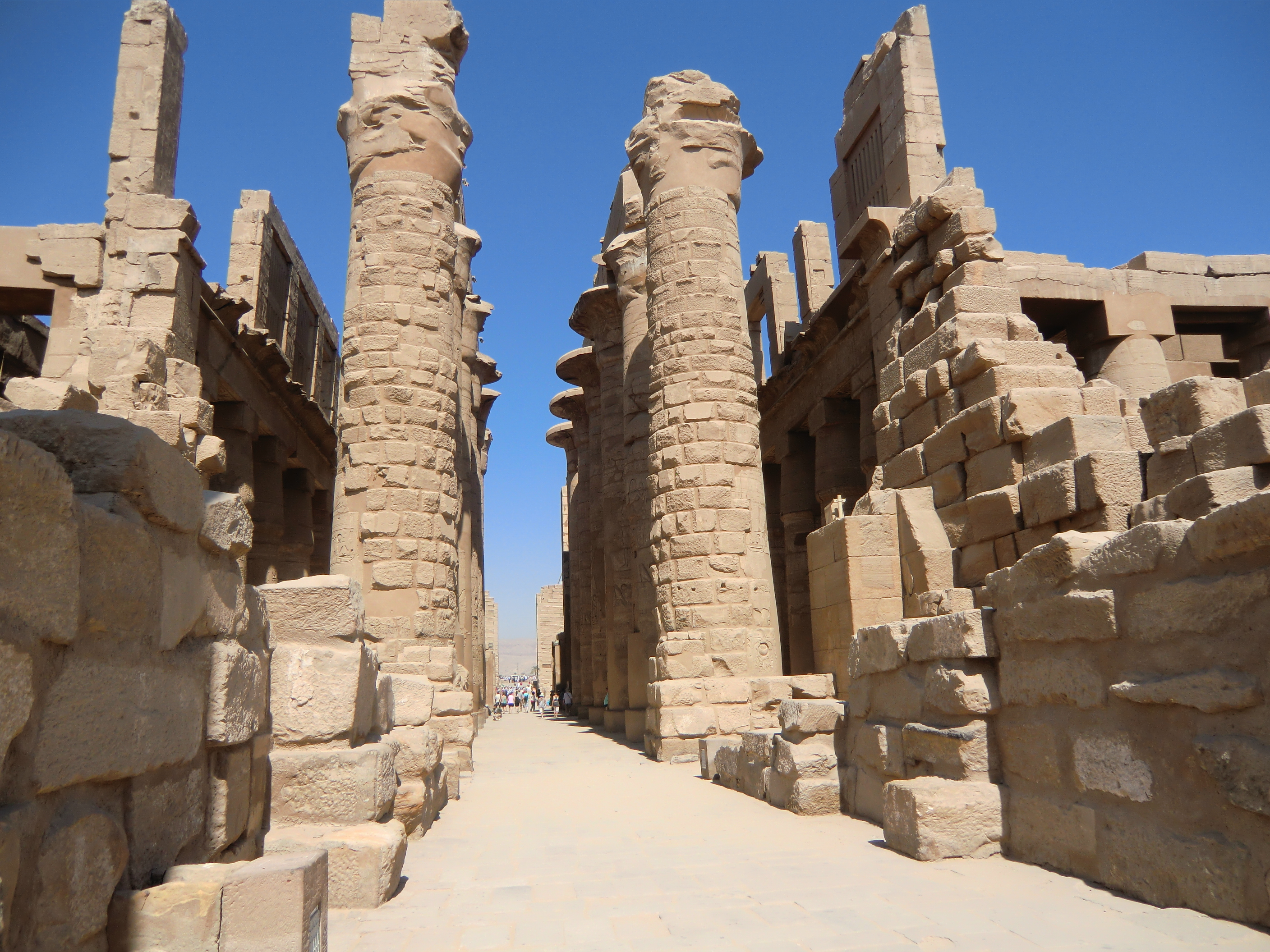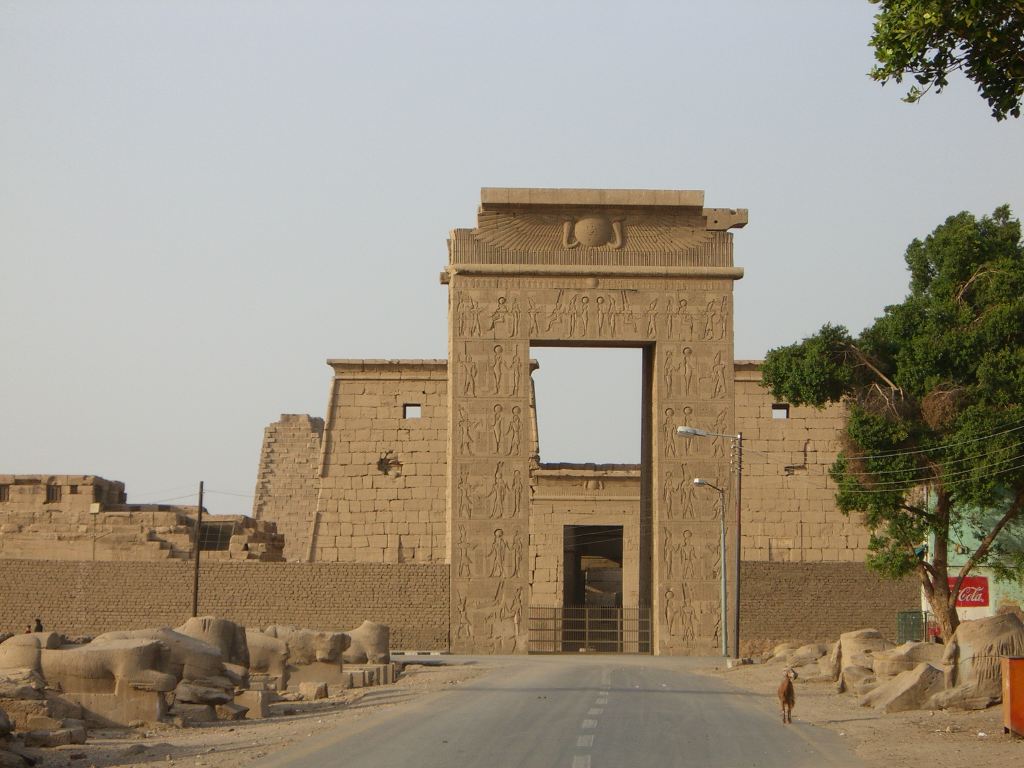|
Duatentopet
Duatentopet or Tentopet (fl. 1150 BCE) was an ancient Egyptian queen of the 20th Dynasty, the wife of Pharaoh Ramesses IV, and mother of Ramesses V. Even though the identity of Ramesses IV's wife has not been clearly stated in history, she is considered the most likely candidate by virtue of the titles she was given and which were found listed in her tomb (QV74). In the Karnak Temple Complex, an Adoratrix named Tentopet is shown with Ramesses III in the Temple of Khonsu The Temple of Khonsu is an ancient Egyptian temple. It is located within the large Precinct of Amun-Re at Karnak, in Luxor, Egypt. The edifice is an example of an almost complete New Kingdom of Egypt, New Kingdom Egyptian temple, temple, and was o .... It is thought likely that Tentopet and Queen Duatentopet were the same person, and that she was a daughter of Ramesses III. This would make her a sister, or a half-sister, of her husband. Her steward Amenhotep was buried in Theban tomb TT346.Dodson & Hilton, p. ... [...More Info...] [...Related Items...] OR: [Wikipedia] [Google] [Baidu] |
Twentieth Dynasty Of Egypt
The Twentieth Dynasty of Egypt (notated Dynasty XX, alternatively 20th Dynasty or Dynasty 20) is the third and last dynasty of the Ancient Egyptian New Kingdom period, lasting from 1189 BC to 1077 BC. The 19th and 20th Dynasties together constitute an era known as the Ramesside period owing to the predominance of rulers with the given name "Ramesses". This dynasty is generally considered to mark the beginning of the decline of Ancient Egypt at the transition from the Late Bronze to Iron Age. During the period of the Twentieth Dynasty, Ancient Egypt faced the crisis of invasions by Sea Peoples. The dynasty successfully defended Egypt, while sustaining heavy damage. History After the death of the last pharaoh of the 19th Dynasty, Queen Twosret, Egypt entered into a period of civil war. Because of lost historical records, the cause of the civil war is unknown. The war was ended with the accession to the throne by Setnakhte, who founded the 20th Dynasty of Egypt. From the reign ... [...More Info...] [...Related Items...] OR: [Wikipedia] [Google] [Baidu] |
Ramesses IV
Usermaatre Heqamaatre Setepenamun Ramesses IV (also written Ramses or Rameses) was the third pharaoh of the Twentieth Dynasty of the New Kingdom of Ancient Egypt. He was the second son of Ramesses III and became crown prince when his elder brother Amenherkhepshef died aged 15Peden, A. J., The Reign of Ramesses IV, Aris & Phillips Ltd, (1994). in 1164 BC, when Ramesses was only 12 years old. His promotion to crown prince: is suggested by his appearance (suitably entitled) in a scene of the festival of Min at the Ramesses III temple at Karnak, which may have been completed by Year 22 f his father's reign (the date is mentioned in the poem inscribed there) As his father's chosen successor, the prince employed three distinctive titles: "Hereditary Prince", "Royal scribe" and "Generalissimo." The latter two titles are mentioned in a text at the temple of Amenhotep III at Soleb and all three titles appear on a lintel now in Florence, Italy. As heir-apparent he took on increasin ... [...More Info...] [...Related Items...] OR: [Wikipedia] [Google] [Baidu] |
Ramesses V
Usermaatre Sekheperenre Ramesses V (also written Ramses and Rameses) was the fourth pharaoh of the Twentieth Dynasty of Egypt and was the son of Ramesses IV and Duatentopet. His mummy is now on display at the National Museum of Egyptian Civilization in Cairo. Reign Ramesses V's reign was characterized by the continued growth of the power of the priesthood of Amun, which controlled much of the temple land in the country and the state finances, at the expense of the ruling pharaohs. The Turin 1887 papyrus records a financial scandal during Ramesses' reign that involved the priests of Elephantine. Year 1 A period of domestic instability also afflicted his reign, as evidenced by the fact that, according to the Turin Papyrus Cat. 2044, the workmen of Deir el-Medina periodically stopped work on Ramesses V's KV9 tomb in this king's first regnal year, out of fear of "''the enemy''", presumably Libyan raiding parties, who had reached the town of Per-Nebyt and "''burnt its people''." ... [...More Info...] [...Related Items...] OR: [Wikipedia] [Google] [Baidu] |
Ramesses III
Usermaatre Meryamun Ramesses III was the second Pharaoh of the Twentieth dynasty of Egypt, Twentieth Dynasty in Ancient Egypt. Some scholars date his reign from 26 March 1186 to 15 April 1155 BC, and he is considered the last pharaoh of the New Kingdom of Egypt, New Kingdom to have wielded substantial power. His long reign saw the decline of Egyptian political and economic power, linked to a series of invasions and internal economic problems that also plagued pharaohs before him. This coincided with a decline in the cultural sphere of Ancient Egypt. However, his successful defense was able to slow down the decline, although it still meant that his successors would have a weaker military. He has also been described as a "warrior Pharaoh" due to his strong military strategies. He led the way by defeating the invaders known as "the Sea Peoples", who had caused destruction in other civilizations and empires. He was able to save Egypt from collapsing at the time when Late Bronze Age c ... [...More Info...] [...Related Items...] OR: [Wikipedia] [Google] [Baidu] |
Queen Consort
A queen consort is the wife of a reigning king, and usually shares her spouse's social Imperial, royal and noble ranks, rank and status. She holds the feminine equivalent of the king's monarchical titles and may be crowned and anointed, but historically she does not formally share the king's political and military powers, unless on occasion acting as regent. In contrast, a queen regnant is a female monarch who rules ''suo jure'' (Latin for, "in her own right") and usually becomes queen by inheriting the throne upon the death of the previous monarch. A queen dowager is a widowed queen consort, and a queen mother is a queen dowager who is the mother of the current monarch. Titles When a title other than king is held by the sovereign, his wife can be referred to by the feminine equivalent, such as princess consort or empress consort. In monarchies where polygamy has been practised in the past (such as Morocco and Thailand), or is practised today (such as the Zulu people, Zulu ... [...More Info...] [...Related Items...] OR: [Wikipedia] [Google] [Baidu] |
Egypt
Egypt ( , ), officially the Arab Republic of Egypt, is a country spanning the Northeast Africa, northeast corner of Africa and Western Asia, southwest corner of Asia via the Sinai Peninsula. It is bordered by the Mediterranean Sea to northern coast of Egypt, the north, the Gaza Strip of Palestine and Israel to Egypt–Israel barrier, the northeast, the Red Sea to the east, Sudan to Egypt–Sudan border, the south, and Libya to Egypt–Libya border, the west; the Gulf of Aqaba in the northeast separates Egypt from Jordan and Saudi Arabia. Cairo is the capital, list of cities and towns in Egypt, largest city, and leading cultural center, while Alexandria is the second-largest city and an important hub of industry and tourism. With over 109 million inhabitants, Egypt is the List of African countries by population, third-most populous country in Africa and List of countries and dependencies by population, 15th-most populated in the world. Egypt has one of the longest histories o ... [...More Info...] [...Related Items...] OR: [Wikipedia] [Google] [Baidu] |
Ancient Egyptian Religion
Ancient Egyptian religion was a complex system of Polytheism, polytheistic beliefs and rituals that formed an integral part of ancient Egyptian culture. It centered on the Egyptians' interactions with Ancient Egyptian deities, many deities believed to be present and in control of the world. About 1,500 deities are known. Rituals such as prayer and offerings were provided to the gods to gain their favor. Formal religious practice centered on the pharaohs, the rulers of Egypt, believed to possess divine powers by virtue of their positions. They acted as intermediaries between their people and the gods, and were obligated to sustain the gods through rituals and offerings so that they could maintain Ma'at, the order of the cosmos, and repel Isfet (Egyptian mythology), Isfet, which was chaos. The state dedicated enormous resources to religious rituals and to the construction of Egyptian temple, temples. Individuals could interact with the gods for their own purposes, appealing for hel ... [...More Info...] [...Related Items...] OR: [Wikipedia] [Google] [Baidu] |
Ancient Egypt
Ancient Egypt () was a cradle of civilization concentrated along the lower reaches of the Nile River in Northeast Africa. It emerged from prehistoric Egypt around 3150BC (according to conventional Egyptian chronology), when Upper and Lower Egypt were amalgamated by Menes, who is believed by the majority of List of Egyptologists, Egyptologists to have been the same person as Narmer. The history of ancient Egypt unfolded as a series of stable kingdoms interspersed by the "Periodization of ancient Egypt, Intermediate Periods" of relative instability. These stable kingdoms existed in one of three periods: the Old Kingdom of Egypt, Old Kingdom of the Early Bronze Age; the Middle Kingdom of Egypt, Middle Kingdom of the Middle Bronze Age; or the New Kingdom of Egypt, New Kingdom of the Late Bronze Age. The pinnacle of ancient Egyptian power was achieved during the New Kingdom, which extended its rule to much of Nubia and a considerable portion of the Levant. After this period, Egypt ... [...More Info...] [...Related Items...] OR: [Wikipedia] [Google] [Baidu] |
Karnak
The Karnak Temple Complex, commonly known as Karnak (), comprises a vast mix of temples, pylons, chapels, and other buildings near Luxor, Egypt. Construction at the complex began during the reign of Senusret I (reigned 1971–1926 BC) in the Middle Kingdom () and continued into the Ptolemaic Kingdom (305–30 BC), although most of the extant buildings date from the New Kingdom. The area around Karnak was the ancient Egyptian ''Ipet-isut'' ("The Most Selected of Places") and the main place of worship of the 18th Dynastic Theban Triad, with the god Amun as its head. It is part of the monumental city of Thebes, and in 1979 it was added to the UNESCO World Heritage List along with the rest of the city. Karnak gets its name from the nearby, and partly surrounded, modern village of El-Karnak, north of Luxor. Name The original name of the temple was ''Ipet-isut'', meaning "The Most Select of Places". The complex's modern name "Karnak" comes from the nearby village of el-Karnak ... [...More Info...] [...Related Items...] OR: [Wikipedia] [Google] [Baidu] |
Temple Of Khonsu
The Temple of Khonsu is an ancient Egyptian temple. It is located within the large Precinct of Amun-Re at Karnak, in Luxor, Egypt. The edifice is an example of an almost complete New Kingdom of Egypt, New Kingdom Egyptian temple, temple, and was originally constructed by Ramesses III on the site of an earlier temple. The gateway of this temple is at the end of the avenue of sphinxes that ran to the Luxor Temple. In Ptolemaic dynasty, Ptolemaic times, Ptolemy III Euergetes constructed a great gateway and enclosure wall for the temple; only the gateway now remains (see below). Inscriptions inside the forecourt of the temple were made in the time of Herihor. The hypostyle hall was erected by Nectanebo I and is not of great size; inside were found two Baboon, baboons that appear to have been carved in the time of Seti I. It probably belonged to the earlier building on the site. Numerous blocks with unmatched and inverted decorations can be seen, showing the amount of reconstruction an ... [...More Info...] [...Related Items...] OR: [Wikipedia] [Google] [Baidu] |
Thames & Hudson
Thames & Hudson (sometimes T&H for brevity) is a publisher of illustrated books in all visually creative categories: art, architecture, design, photography, fashion, film, and the performing arts. It also publishes books on archaeology, history, and popular culture. Headquartered in London, it has a sister company in New York City, and subsidiaries in Melbourne, Singapore, and Hong Kong. In Paris it has a sister company, Éditions Thames & Hudson, and a subsidiary called Interart which distributes English-language books. The Thames & Hudson group currently employs approximately 150 staff in London and approximately 65 more around the world. The publishing company was founded in 1949 by Walter and Eva Neurath, who aimed to make the world of art and the research of top scholars available to a wider public. The company's name reflects its international presence, particularly in London and New York. It remains an independent, family-owned company, and is one of the largest publishe ... [...More Info...] [...Related Items...] OR: [Wikipedia] [Google] [Baidu] |
